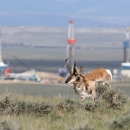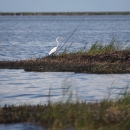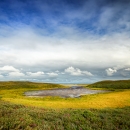What We Do
Through a series of laws created over the last century, Americans have declared that we need to collectively protect landscapes, fish, wildlife, and plants.
Several agencies in the federal government put our country's conservation laws into action, and the Ecological Services Program helps lead the way.
We administer the Endangered Species Act, working with experts in the scientific community to identify species on the verge of extinction and to build the road to recovery to bring them back. We working with our partners in federal and state agencies, tribes, local governments, the business community, and private citizens, to help protect important habitat, and help increase species' populations and reduce the threats to their survival so that they can be removed from federal protection.
To better understand these wild places, we map, monitor, and inventory our nation's wetlands. We provide guidance and expertise to protect wildlife for projects such as wind farms and large scale transportation developments meeting our society's growing energy and transportation needs.
Our environmental contaminant specialists review project plans, licenses, even proposed laws and regulations, to avoid or minimize harmful effects on wildlife and habitats.
In cases of significant releases of hazardous waste, they work in the field to pinpoint sources of pollution and investigate effects, using this data to secure compensation for lost or damaged wildlife and habitat.
Management and Conservation
With offices in all 50 states, the Ecological Services Program is working with you to meet the challenge of conserving the nature of America.
When we protect species and habitats, we conserve the natural resources on which we all depend. We ensure that wetlands persist to protect us from storms and filter our water. We conserve for future generations a continued source of sustainable land. Wild things and wild places are part of our shared history. They are part of the natural foundation of the lands we call home.
Our Programs
Our Laws and Regulations
The U.S. Fish and Wildlife Service (Service) has the statutory mandate and trust responsibility to fulfill its mission derived from various statutes and authorities. The Ecological Services Program plays a significant role in implementing the roles and responsibilities assigned to the Service under the following authorities (not an exhaustive list):









